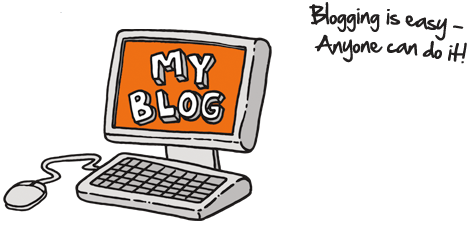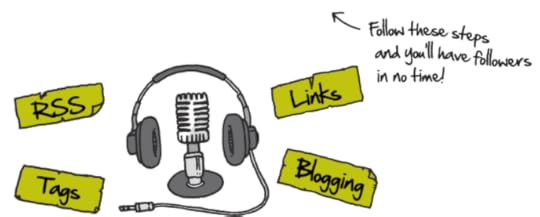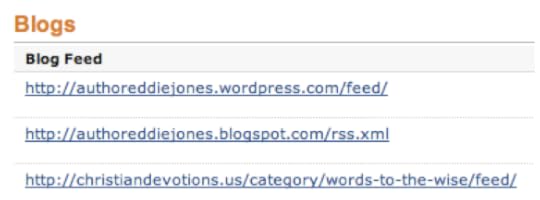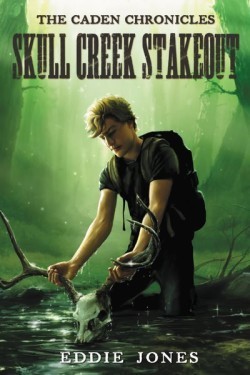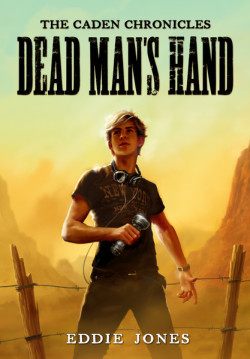Eddie Jones's Blog, page 37
November 25, 2013
The Day I Met JFK
 Please note: what you are about to read is all hearsay. I was there but do not remember any of the details of the events of which I am about to report. My sister says it all happened as she described and I am certain it did. My sister is always right, even when she’s wrong.
Please note: what you are about to read is all hearsay. I was there but do not remember any of the details of the events of which I am about to report. My sister says it all happened as she described and I am certain it did. My sister is always right, even when she’s wrong.
So here’s what happened. Marji and I were staying with Grandmamma Jones in the Green House – green being the color of the structure, not the name of the owner, though on the Jones side of the family there is a strand of Greens. There is also a thread of Gays but we will leave that alone for now.
Okay, so Grandma Jones babysat us that day and as she was prone to do, we went visiting her neighbors. On this occasion, her neighbor was the governor of North Carolina. “She led us around back,” my sister recalls, “and we sat on the back steps. The maids brought us lemonade.”
I do not know what Grandmamma Jones did while Marji and I sipped lemonade. I suppose she advised the governor on how he should run his state. Grandmamma Jones excelled at giving advice.
At some point, Grandmamma Jones returned and marched us to the front of the Governor’s Mansion. JFK arrived, we stood, I watched. At least that’s what my sister tells me. Again, I was only three, so I only remember this in a vague heard-it-countless-times-before-so-it-must-be-true sort of way. For all I know I might have been home watching Mr. Kangaroo on a black and white TV.
“The President patted you on the head, turned and walked up the steps into the Governor’s Mansion. For some reason you took this as your cue to follow him inside. You got as far as the foyer before they stopped you.”

My son flashing his JFK smile
At 11:21 am CST fifty years ago yesterday, Jack Ruby murdered Lee Harvey Oswald. We will never know if Oswald acted alone, if Ruby was hired to silence President Kennedy’s assassin or how the course of our nation might have been altered had JFK lived and served two terms. But I know this: on a warm day in 1960 I met JFK.
Or so my sister says.
November 22, 2013
Start a Blog
EddieJones.org - A key part of your online presence is having a blog. A blog goes beyond Facebook and Twitter, and acts as your home base for engaging fans and colleagues. It’s not much more work than Facebook or Twitter.
In fact, creating a blog has become extremely easy thanks to a variety of services that will host it and help you set it up. You don’t need to be a coder to create a fine blog.
Trust us, If you can send email, you can blog. And it’s a fantastic way to connect to people who likely have a built-in interest in your audiobook.
Get Started. Start with one of the many available services that make building your blog kind of like a paint-by-numbers exercise. Most are even free. Check out:
Blogger
WordPress
Posterous
Typepad (charges a fee)
Squarespace (charges a fee)
So what do these services do? They give you a template; you simply make some choices and fill it in. Many allow you to post to your blog using nothing but email. You can even use them to syndicate your photos and videos to other locations online.
What blog services can do for you:
Share what you’re working on and invite comments. This makes readers feel attached to you and your work.
Update your blog frequently. Once a day is ideal, three times a week is a minimum. Frequent maintenance is important—it gets people to return regularly.
Test your idea for a book or performance. People love getting a peek inside the creative process!
If you’re a narrator, post your audio work to showcase your talent.
Create and post a short video. This could be another great place for an audiobook trailer. After uploading it to YouTube, embed the video player on your blog. (YouTube makes it simple. Just look for the “Embed” button.)
Link to your audiobook on Audible.com, Amazon.com, or iTunes. Encourage people to become AudibleListener® members on Audible. Remember, if they buy your audiobook as one of their first three downloads, you get that Twenty-five Dollar Bounty Payment! (With the Royalty Share deals, the Rights Holder and Producer split that twenty-five dollars, so both have an incentive to promote!)
Top Tips For Blogging
Here are our top tips for blogging.
Give your blog a name that’s short, easy to spell, and memorable.
Link to your books on Audible.com, Amazon.com, iTunes, and wherever else they can be found. Don’t post ads for your audiobook. Instead mention it (with links) in the context of the posting.
Post regularly. Every day if you can, three times a week at minimum.
Respond directly to as many posted comments as possible, either with your own comment or in a new post. Of course always be polite.
Use Twitter and Facebook to drive people to your blog. Let the world know what you’re talking about, and provide a link back to your blog.
Create effective tags.
Use images (that you have rights to use) as much as possible.
Include links to other blogs and websites.
Join blog networks. Look up blog directories and list yours with them.
Make it easy for people to contact you from your blog, whether by email, phone, a contact form, or comments.Tip: Don’t want to give out your actual phone number? Get a free phone number from Google Voice and post that to your blog—it will forward the calls to your regular number.
Allow and encourage fans to give you their email address or sign up for an RSS feed of your blog.
(Reprinted with permission from ACX: www.acx.com/help/blogs-get-started-get-tips/200575360)
Lighthouse Publishing of the Carolinas uses ACX for our audio books. Check out these audio books on Amazon.com.
[image error]
[image error]
[image error]
[image error]
November 20, 2013
More Amazon Reviews for You!
 EddieJones.org – Increasingly, readers turn to online reviews written by peers to learn if a book is worth purchasing. Many “professional” reviews are simply rehashes of publisher-generated publicity. Most of the time, professional critics don’t tell readers the one thing they want to know—whether they’ll like the book.
EddieJones.org – Increasingly, readers turn to online reviews written by peers to learn if a book is worth purchasing. Many “professional” reviews are simply rehashes of publisher-generated publicity. Most of the time, professional critics don’t tell readers the one thing they want to know—whether they’ll like the book.
Today, all it takes is a quick skim of customer reviews on Amazon to know if you’ll like a book, and what amateur reviewers lack in highbrow sensibilities, they make up in credibility and relevancy.
What percentage of buyers at brick-and-mortar bookstores made their choice by reading Amazon customer reviews? There’s no way to know, but chances are it’s a substantial and growing number, so seed your book’s success by garnering reviews on Amazon.
Reviews For YOU!
If buyers are making their decisions based on Amazon reviews you can bet bookstore buyers are, too. Amazon is ground zero for your online campaign. It provides free worldwide exposure. Simply having your book properly listed for sale on Amazon can create demand for it everywhere.
How can these reviews help you? Credibility. Amazon doesn’t say it explicitly, but the more reviews your book receives, the higher it will appear in the “relevant” search rankings. This is why you need to begin working to gain reviews for your book before its release. How? With book giveaways on Goodreads, blog tours, promotions and sending galley copies to friends. In return ask those individuals who say nice things about your book to post a review when your book releases. (Depending on the publisher’s arraignment with Amazon, sometimes they can post reviews before its release.)
When it comes to book sales, you have to be popular to become popular. Amazon reviews are a quick indicator of your book’s success. A low number of reviews or a low star rating and the reader may exit your page before scrolling down an inch.
Step One: Fire Up Your Tribe
Encourage anyone who tells you how much he or she enjoyed your book to write a review on Amazon.com. As your positive reviews grow, so may your sales.
It is YOUR job to drive reviewers (friends, family, fans, Tweeters, bloggers, etc) to your Amazon page and fill these reviews. Your book will need 10 to be taken seriously - 100 to be considered a serious book. The bar is high because customers are reluctant to post reviews. Readers know this so when they see a book with 50 reviews they know merits consideration.
Step Two: Combat Negative Reviews
Even a poor review can be good—if the reviewer shares pertinent facts about your book that other readers might find interesting. For example, a comment like: “Too preachy” might turn off some readers and attract inspirational readers. Multiple 1 star reviews can slow sales or kill your book’s momentum, so balance low star reviews by asking readers who contact you with kind words to post a review after negative reviews appear. Here’s how.
When a reader congratulate you on your book ask for their help. Send them an email or contact via Facebook and say:
Thank you for the kind words about my book. If you have a spare moment, it would be a great help if you could post a review on Amazon and let other potential readers know why you liked it. It’s not necessary to write a lengthy, formal review—a summary of the comments you sent me would be fine. Here’s a link to the review form for my book:
http://www.Amazon.com/gp/customer-rev...
(Note: you will need to put your book’s actual ASIN in place of the letters ISBN, like this:
http://www.Amazon.com/gp/customer-reviews/write-a-review.html?asin=1938499018 This link should take you to the review page for My Father’s Business: 30 Inspirational Stories for Discerning and Doing Gods Will. You can find your book’s ASIN on the web address at its Amazon page. See the image below.)
Save this canned text and use it anytime you see a negative review appear about your book. Also seek out fans that praised your book but have not post a review. Maybe add that their comments are needed and appreciated.
Step Three: Offer Amazon gift cards as a “thank you”
Offer to give Amazon gift cards as a “thank you” to readers who buy your book and post a review. Readers will need to provide you with the email address attached to their Amazon account.
The reality is a review on Amazon is gold. The next time your author friend has a birthday don’t send an eGreating Card – post a positive review of their book on Amazon. This will mean more to their career than you can imagine.
November 17, 2013
Managing Your Amazon Author Page
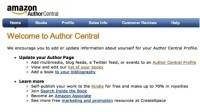 Your Amazon Author Page
Your Amazon Author PageWhether you are a traditionally published or self published, if you have at least one book released on Amazon you can set up your Author Central page.
From Author Central you can:
Update your Author Page
Add multimedia, blog feeds, a Twitter feed, or events to an Author Central Profile
View and edit our list of your books
Add a book to your bibliography
Beginning September 14, 2012 Kindle readers now have access to your “About the Author” page. This gives readers access to your biography and lists all your books in a single place on Kindle. Readers can tap on any of your books and be directed to the Kindle store where they can download the book in under 60 seconds. Also, any time you update your biography or claim a new book through Author Central, About the Author will update on Kindle giving your readers access to the most recent information.
To begin adding books to your bibliography follow these steps:
Claim all your books in Author Central (you can do this via your book’s ISBN or title)
Make sure your bibliography is complete (keep your bio updated)
Make sure you have the right image on your profile page. All About the Author pages will use the image that you have designated as primary in Author Central
Make your About the Author page interesting and engaging
Author Video
Add a video book trailer to your author page. You can also share video interviews, book signing videos, and other videos with readers. Your videos should focus on specific features of your books or your experience as an author. Your videos should not include any of the following: Obscene or distasteful content. Phone numbers.
Your Bibliography
The Books tab in Author Central lists the books displayed on the Amazon.com Author Page. If any of the books listed have incorrect information or are not correctly assigned to you, it’s easy to correct them using Author Central. When you join Author Central and manage your bibliography for the first time, it may take us 3 to 5 days to Create Your Author Central Account and build the Author Page.
If you have written a book that doesn’t appear in your bibliography and is available on Amazon.com, you can add it. On the Author Central Books tab, scroll to the bottom of your bibliography and click Add more books.
In the Search field, enter the book title, ISBN, or author name and click Go.
Once you’ve found the missing title, click “This is my book” below that book. If our catalog lists your name as the author, you’re all set.
The order of books is determined by a book’s relevance, the same way your books appear on the Amazon.com Author Page. The most popular books, based on a set of rules designed to provide the best customer experience, appear near the top of the list. We cannot change the order. Remember that customers can sort books in several different orders on the Author Page.
Your Biography
Amazon recommends you write your bio offline and keep a saved copy. You can then copy the text and paste it onto the Author Central Profile Page. On the Author Central Profile tab, click edit next to “Personal Biography.” Enter text that meets the following guidelines:
At least 10 characters
Plain text only—no bold, italics, HTML or other rich formatting
Click Preview biography to review your work. When you’re satisfied, click Save biography. Your uploaded biography will appear on the Author Page within 30 minutes.
Your Blog
Plug your blog from your author page. An RSS feed allows your blog to flow directly into your author page. Your latest posts will appear on your Amazon author page. As far as I know, this is the only way Amazon allows you to hyperlink to another site from Amazon.com. For this reason, when you post a blog consider linking the first sentence and pointing to your website, Facebook page or blog site.
When you add a blog feed, you are linking to a blog you’ve created elsewhere. Whenever you update your blog, the blog teasers that appear on the Author Page on Amazon.com update automatically, within 24 hours of being posted on your blog.
Click to learn how to blog from your Author Central page.
Speaking Events
Announce your speaking appearances and book tour stops. Keep your events calendar current. This gives readers a chance to connect with you in person. Plus, groups, schools and churches may invite you to speak.
After you’ve created an event, it will be displayed in the Scheduled Events section. Customers can see the detail of the Event: Venue, location, time, a short description of the event, and the book you’re touring with. This information appears on the Author Page and on BookTour.com. Your personal information is not shared with BookTour.com and remains confidential.
Your Author Central page is your book signing table at the front of the world’s largest bookseller. Use it!
November 11, 2013
Writing Romantic Comedy
 At writers’ conferences I sometimes get asked to explain the formula for writing romantic comedy. Here is a basic plot outline of what you often find in a Romantic Comedy book or movie.
At writers’ conferences I sometimes get asked to explain the formula for writing romantic comedy. Here is a basic plot outline of what you often find in a Romantic Comedy book or movie.
Act I
1) Introduction - Introduce the hero before the romantic rival. Readers and audiences instinctively identify with the first character who appears on the screen. This is often your lead character.
2) Establish your lead character’s motivation. What does he / she want outside of a relationship. Fly to the moon, be a White House reporter, get free cable? In a properly structured film (or novel), the hero’s outer motivation, which defines the story concept, is established no later than 25% of the way through the story.
3) Inciting Encounter – What disturbing event disrupts your lead’s normal life?
4) Call to Action – Challenge your lead to accept this new adventure
4) Denial of Call to Action – Show how your main character(s) resist the challenge.
5) Repeat of Call to Action based on emotions – Appeal to your lead on an emotional level. ”Little Jimmy will die if you do not …”
6) Acceptance of Call to Action – Show your lead reluctantly accepting the challenge.
7) Begin the quest – Your main characters set off on their great adventure.
Act II
1st date: Chance encounter – Show the first meeting between the hero and the romance. Both in real life and in fiction, the most enthralling part of any relationship comes with that first, head-over-heels, all-consuming attraction.
2nd date: Background revealed, values presented, ground rules established
3rd date: First Physical Encounter, A Touch of Flesh
4th date: Falling for each other while in pursuit of external goals (Remember that outward motivation introduced at the start? This drives the story and your two love birds apart.)
5th date: Conflict spills into work – Love and conflicting goals threaten their work.
6th date: Hostile Encounter - First fight, differences aired.
8) Friend’s Support Scene - Friends come to rescue, talk your lead off the ledge.
7th date: Domestic Encounters - Couple plays house. Makes a craft, cooks, baby sits.
8th date: Work Interrupted - Now work is not simply interrupted, but threatened. She shows up at his office. In the middle of a big presentation, he calls her boss to say he’s taking her to lunch.
9) Friend’s Strategy Scene - Friends step in to offer new strategy for salvaging the relationship that is now, obviously, unraveling.
10) Point of No Return - The hero / heroine should commit to the relationship by the mid-point of the book. The halfway mark of any journey is the POINT OF NO RETURN – that moment where the traveler is closer to the destination than the point of origin. Show the hero making a physical, emotional, tangible commitment that indicates that there’s no turning back. From here on she can never return to the emotional life she was living when the story began.
9th date: Friend relationships Interrupted - Friends must go. “Pick, it’s me or them.”
11) First Termination Scene – Having committed to each other (rather than friends), blow up the relationship over misunderstandings, stress, cultural differences, etc…
10th date: Meet the Family – Playing House – Restore the relationship by playing house and meeting the family
11th date: Prom Night – Cinderella Ball Scene – All is going well, marriage might be an option, until…
Secrets Exposed Scene – Clock strikes 12 and real identities / motives are revealed
Final Termination – “You go your way, I’ll go mine.” “Fine.” “Fine!”
Act III
One Last Chance Scene – Hero or Heroine comes to their senses and realizes they cannot live without each other
Sacrifice Offered Scene – Hero or Heroine offers to forgo their external goals for the love of the other
12th date: Final Encounter – Win or Lose Love
13th date: Tie Up Loose Ends – Sail Into Sunset
October 11, 2013
Old Dog, New Trick
How many times should I let my old dog pee on the floor before I insist she wear a diaper? Ten? Fifty? Never? If I forgive her for wetting my rug, does that mean I also have to accept the yellow stains as part of the décor? And why, after all these years, has this smelly mutt decided now is the time to begin relieving herself by my footstool? These are important questions — questions to which the Internet offers no clear answers.
I learn a lot about myself from my dog. For example, I suspect God views my intentional “messes” and thinks: “Wow, Eddie, did you think I wouldn’t notice?” Then, through circumstances, a chastening word from a friend, or a Bible verse, I’m “crated” for a time. Cool thing is, when I climb into His lap and apologize . . . and mean it . . . our relationship is restored.
Until I mess up again.
In prayer there is a connection between what God does and what you do. You can’t get forgiveness from God, for instance, without also forgiving others. If you refuse to do your part, you cut yourself off from God’s part. Matthew 6:14 The Message (MSG)
Jesus makes clear that to the degree we forgive others, we will also be forgiven. Almost makes it sound like conditional salvation. But what I think Christ really means is, the way we treat others reflects the degree of gratitude we have toward God. He who has been forgiven much, loves much . . . and so on.
Next week we leave for an extended vacation to California. Because of her bladder issues (or simply bad behavior), Sandy Beach will have to spend her days in a crate. I hate that for her. Until a few months ago the dog had the run of the house. I forgive Sandy for messing on the carpet, but I can’t abide by a dog that does her business on the living room floor.
Human perfection can only be found in a relationship with God based upon the saving blood of Christ. This, I keep in mind every time I fold a paper towel and soak up Sandy’s yellow stain. She’s not perfect; neither am I. We both leave our mark on others.
May we go and ask forgiveness of those we have offended . . . and likewise forgive others.
Photo Credit: http://www.dog-obedience-training-online.com/house-training-dogs.html
September 24, 2013
PLOT IN ACTION! – by Eddie Jones
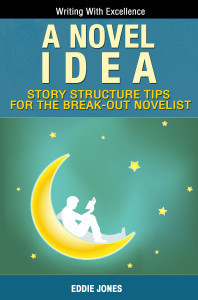
A Novel Idea: Story Structure Tips for the Break-Out Novelist
(excerpt from A Novel Idea)
The basic structure of plot and the three-act framework are so universal that it is embedded in our DNA (We’re born, we live, we die.) We accept the three-act structure because it echoes the structure of our days: We rise (to an adventure), work (through our problems), and we return (to somewhat of a normal home).
Act One: Familiar Surroundings Falling Apart
Every story opens with the introduction of your main character. Here the reader must have a clear sense of what the story is about. What is its tone, promise, the problem for its main characters, and the types of characters we will meet? Blake Snyder, author of Save the Cat, writes: “The Hero has to do something when we meet him so that we like him and want him to win.” This single enduring quality will bond your readers to your main character.
Though problems exist for your main character, your Lead will remain in his/her normal world unless and until something throws everything off balance. This is your Lead’s “inciting incident.” This great disturbance shifts your Lead’s life in a new direction. Many times your Lead will resist this call to action (presenting the seeds of inner conflict). In this debate section, your Lead must wrestle with a question. Here you will hint at the sacrifice to be made later. An additional element (prize or punishment) will be added to the mix and finally your Lead will accept the challenge and depart. Thus Act One will move from:
Introduction
Inciting Incident/Great Disturbance
Call to Action / Denial of Call / Acceptance of Call to Action
Identification of Your Lead’s Goal
Advance
The curtain comes down, marking the end of the first act. In order to move your Lead from Act One into Act Two, he/she must pass through what James Scott Bell calls a “one way door.” If your lead can return to his/her previous life, then he/she hasn’t jettisoned his/her old life for the new.
Act Two: Problems, People, and Growth
Act Two reveals your Lead’s emotional journey as he/she overcomes obstacles. As the hurdles become more frequent and larger, you raise the stakes for your Lead. Both inner and outer struggles will mark your Lead’s journey as they move toward what appears to be certain defeat. Include both reversals of fortune and unexpected blessings to give your reader both a sense of hope and dread.
Early in Act Two, change your Lead’s status. Depending on your Lead’s “normal” life, remove or increase your Lead’s power, position, and prestige. Oftentimes your character becomes the opposite of what he was in Act One. Think Harry Potter. At the beginning of each book, Harry is in Muggleland, without power, prominence, or freedom. In Act Two (at Hogwarts), Harry finds himself powerful, revered, and favored by the faculty.
Act Two will consume the major part of your story. Often called the “muddle,” the bulk of your action takes place here. Regardless of whether the conflict is internal or external, your lead must face a series of confrontations, both small and large, between him/her and the opposition. Act Two moves from:
Small Hurdles
Status Change
Fun & Games
Large Hurdles, Death, Danger, & Conflict
Black Moment
Glimmer of Hope
Act Two is an inverted mirror of your Lead’s normal world in Act One. Here, the characters from Act One appear as enlarged or diminished personalities. For example, in the Harry Potter stories, the character of Dudley Dursley (Harry’s antagonistic, spoiled, and bungling stepbrother) appears in Act Two as the antagonistic, spoiled, and powerful Draco Malfoy. (They even share the same first letter in their first name.) The first half of Act Two is the fun and games portion of the story. This often coincides with your character’s “status change.” (Again, the idea of “status change” is to flip your Lead’s position, power, or prestige. If they’re rich in Act One, they become poor in Act Two. Single in Act One? In love in Act Two. Unemployed in Act One? CEO of the company in Act Two.) Here in the fun and games scenes, your main characters bond, travel, explore, and learn about each other. Often the tone is light and painted in rich colors.
Midway through Act Two your Lead will reach a high or low point reflecting a turn in his/her journey. The midpoint is never as good as it seems or as bad as we fear, but it does mark “halftime” for your Lead’s journey. Now the stakes are raised. The bad guys become worse. The danger increases. There is a hint of death and your Lead faces conflict at every turn. Each scene brings him/her closer to the “black moment”—the instance where all appears lost.
To move from Act Two to Act Three, your lead must reach a breaking point. This is your Lead’s moment of crisis: his/her crucifixion. Here the story will demand that a principle or person be sacrificed for the good of the goal. This is the point where your Hero’s old world and old way of thinking die to the “new normal.” With nothing left to lose, your Lead is willing to risk everything for one last shot at reaching the goal. Once committed, your Lead can’t go back. He/she rushes through another one-way door.
But before you rush into Act Three, ask: Where is my tender romance scene? Where is my sacrifice scene? Where is my Lead’s disappointment scene? Where is my scary scene? Where is my funny scene? If you cannot find these scenes in your story, make a note to go back and add them later. These scenes will add richness and texture to your story.
Act Three
Thrust into another new world, your Lead faces his/her greatest fear: the one thing they hoped would never happen. This shift in direction is the second great transition. Any form of transpiration will work. The idea is to allow your reader to see your character moving toward the final confrontation. Thus, in Act Three your Lead will experience:
Transition
Walk to the Cross
Win or Lose
Climax
A mode of transportation will deposit your Lead at the edge of their internal and external battlefield. From here they will walk to his/her cross with the outcome of their journey in question. Upon reaching the summit, your Lead will face his/her final confrontation. He/she will either reach the goal or fail miserably. After the dust settles, tie up the loose ends. The ending of your novel will tell the reader how to feel and what to think about the events that just happened.
September 13, 2013
Writers’ Workshop – How to Publish Your Own Print & e-Book
The Upstate Chapter of American Christian Writers is happy to host a workshop How to Publish Your Own E-Book (or print) for Little or No Money on Saturday, October 12, 2013, from 9:30 AM to 4:30 PM at Freedom Center Church, 1851 Bleckley Street, Anderson. The workshop will be led by award winning author and editor Eddie Jones.
The workshop will include the following topics:
An Overview of E-book Publishing (and why so many authors are going around the traditional gatekeepers)
How to Launch Your Book with Amazon.com with your own CreateSpace and Kindle Publishing
The Top Ten Mistakes Every Author Needs to Know before Clicking “Publish”
How to Get Your Book Noticed on Goodreads, Pinterest, Twitter, Facebook
Why a Small Press May Be a Better Route than Self-Publishing
The early registration fee for the workshop is $20, which can be paid at the door. Checks should be made out to Upstate SC ACW. Pre-register by September 30 by email to receive the early registration rate. To pre-register contact Elva Martin at elvacmartin@gmail.com with your name, address, phone and email address. In the subject line please write ”Oct. 12 Ebook Workshop.” Non-preregistered attendees pay $25 at the door. You may also register through the chapter website at http://www.upstateSCchristianwriters.com
For more information call chapter president Elva Martin at 864/226-7024
September 10, 2013
Top Tips For Overcoming Writer’s Block by Marcela De Vivo

Top Tips For Overcoming Writer’s Block
Writer’s block can sneak up on you like a dark cloud when you least expect it. It impedes your thinking and creativity. Experiencing writer’s block is a writer’s worst nightmare, because sometimes it is the singular thing standing between you and getting your words out onto paper. The longer your writer’s block continues, the harder it becomes to get rid of it. That is why it’s so important to take the necessary steps to get rid of writer’s block right away. Here are some helpful tips to beating writer’s block.
Free Writing Exercises
Free writing is when you start writing with nothing in particular in mind. You just write and write without stopping for however long it takes to get the creative juices flowing. Starting by writing about something as simple as your breakfast and keep going until your mind gets into the writing space. Eventually, you’ll beat the writer’s block by pushing through it.
Free writing is a helpful exercise to do regularly. Don’t just try it when you are experiencing writer’s block. Instead, make a habit of doing it every day, or at least a couple times a week. This helps your brain stay constantly moving and keeps you creative.
Exercise
Riding a bike, taking a jog, or even just a brisk walk in the park can all be very helpful in fighting writer’s block. Exercise can clear your mind from all the cobwebs enough for a good idea to pop into your head. Sometimes it just works to hush the negative voices in your head. It can also raise your energy levels and send positive signals to your brain.
Put Away Distractions
If your writing space is filled with a hundred little distractions, you’ll never be able to rid yourself of writer’s block. Put away the knick knacks on your desk. Shut the shades of your window so you won’t stop writing to drool over the beautiful day outside. Lock away your phone so you aren’t constantly checking your text messages and taking Candy Crush breaks. Without those distractions, you’ll be able to focus on your writing.
Go to a New Location
A change of scenery can be just the thing you need to start up your creativity. Staring at the same four walls every day may very well be what’s stifling you, so changing it up a bit can be helpful. Go to a coffee shop with your laptop or sit on a bench in a beautiful park with a notebook. Go anywhere that relaxes you enough to focus on your work.
Eating Healthier Foods
Your diet has a lot to do with your state of mind. When you eat junk food, your body begins to feel fatigued and heavy. By eating healthy foods that are rich in antioxidants, you can elevate your mood. With a positive mood and high energy, getting over the writer’s block will be a piece of cake.
It may even be beneficial to supplement your diet with an omega-3 vitamin. This will keep your overall health in good condition, and ensure that you’re not getting dragged down by a frustrating cold.
Keep a Notebook At All Times
One of the problems with writer’s block is that sometimes it only comes when you’re ready to write. If you always keep a small moleskine notebook with you, you can jot down ideas, phrases, lines, and other pieces of writing that come to you during the day. You’ll no longer forget the important writing moments that pop into your head during the day. Carrying a notebook keeps inspiration at the forefront of your brain.
Unplug the Internet
There’s a reason we love the internet. It has everything we could ever want: games, social media, and funny viral videos, among other things. When we’re writing, we tell ourselves that we need the internet for research or the online dictionary. However, in reality it actually serves as more of a distraction than anything. You can always go back to the internet to do research, but while you’re writing your focus should be on your words.
Writer’s block is the bane of most writers’ existences. If you try one or more of these tips while dealing with the block, you’ll be sure to defeat it in no time. Staying inspired will leave your writing fresh and always new.
###
Marcela De Vivo is a freelance writer and mother of three in Southern California. As a full-time writer, she has experienced her share of writer’s block, and finds that changing up her environment helps her stay focused and inspired. Follow her on Twitter for more!
August 23, 2013
Middle Grade Novelist Talks Writing With Teens / Tweens
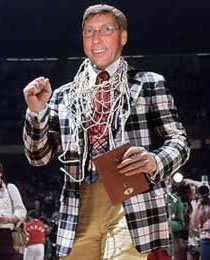
Eddie Dressed as Storm’n Norman Sloan – circa 1975
Did you like to read books when you were a child? If so, what type of book did you enjoy?
I read Tom Sawyer every year for like six years. It was my book report from 7th grade until I graduated high school. I also read Charlie Brown cartoons (back when Charlie had that huge moon head), Mad Magazine, Civil War magazines and books I ordered from school. Still have most of the books I ordered from school forms, including a Munsters novel. In fact, one of the neat things about the Caden Chronicles series is how much the three books, Dead Man’s Hand, Skull Creek Stakeout, and Dead Low Tide, remind me of those books I purchased at school.
Your first application for college admission to NC State was rejected but they finally let you in. You failed Freshman English twice. Yet you persevered and graduated with a degree in journalism. What advice would you offer to young people who enjoy storytelling but struggle with the mechanics of writing?
Turns out learning proper grammar is important. Without the basic skills you look stupid. Not that you are. It’s not that you cannot write. But the reader and editor may assume you are an unskilled writer. So work on the craft, improve on your story-telling skills, and hire a proof editor before submitting your manuscript to an agent or editor. The key thing to remember is that story trumps grammar but grammar will get you bumped from consideration.
How essential is it to earn a college degree (in writing) if one wants to pursue a writing career?
Not at all. Unless you intend to pursue a career in journalism the degree doesn’t matter. An editor or agent has yet to ask me if I majored in English or journalism. That’s the beauty of writing – it’s color blind, gender neutral and educationally unbiased. All the reader cares about is a good story.
How old were you when you became serious about writing professionally?
About five years ago. Ann Tatlock, a two-time Christy award winning author, asked me when I was going to quit my day job and write full time. I heard God in Ann’s sweet voice so I went home, sold my business, and began writing novels full time.
What advice would you give to teens wanting to become novelist?
Read books that make you laugh, cower with fear, cry and challenge you to become a better person. Then study how those authors write the story and phrases the sentences. I keep a highlighter with me at all times. I mark passages and dog-ear pages for quick reference. I also read a lot on my Kindle and highlight passages there, too.
Attend writers’ conferences, network with published authors, meet editors and agents. Finally, write. If you write 1000 words a day, five days a week, in four months you will have the rough draft of a novel. No one has ever published an unwritten novel, so write.
As an Acquisition Editor, Lighthouse Publishing of the Carolinas would you ever consider publishing a novel written by a teen?
Actually, we signed an author three years ago when she was sixteen. Her debut novel, Purple Moon, releases this September. We signed another young man last fall. He is working with our editors now. So yes, as an acquisition editor I am always seeking new, young writers.
What was the greatest thing you learned at school?
That friends are more important than knowledge. Seriously, you will continue to learn throughout your life so if you missed some things in school (as I did), you can always catch up. But you only have a few years to develop those childhood friendships. I still count my high school friends as my inner circle – those who knew me before I became a dull adult. If I were to fix the education system in this country I would start with relationships. Once we have a sense of belonging and value we can learn.
What is the best piece of advice you ever received from another author?
Quit your day job. Steven James told me this six years ago. His point was, if you don’t have a fall back plan you’ll find a way to make a living as a writer. He is correct – not to mention a very successful author.
For those who are unfamiliar with your novel, Skull Creek Stakeout, how would you introduce it?
First, it’s a fun, fast read aimed for middle school boys. I think girls and moms will enjoy it too: we’re getting nice reviews on Goodreads from teachers and mothers. The story begins when a body is found on a golf course in Transylvania, North Carolina. The victim is discovered with a wooden stake driven through his heart, fangs and bite marks on his neck. Nick is called in to solve the murder. My friend Tim Shoemaker (author of Code of Silence and Back Before Dark) called Skull Creek a cross between Scooby Dooby Doo meets Indiana Jones.
My aim is to give boys a book they can enjoy, one taps into today’s fascination with the occult. Each book in the Caden Chronicles series involves one element of the supernatural.
What was one of the most surprising things you learned in creating Nick?
That I misnamed him. In the first manuscript I sent to Zonderkidz I named the main character Boyce Kindle. Forget why. The publisher tested the name with readers and Boyce lost big time so I changed it to Nick. We dropped Kindle due to copyright concerns with Amazon and went with Caden.
Why do you feel you had to tell this story?
My goal with Caden Chronicles series is to give readers (boys especially) a fast, fun read. In middle school I had to do a book report once a year. I’m hoping teens and tweens can read a one of my books in a weekend (and I’ve heard some kids read it over night) and write a report on it. Basically, I’m trying to make it easy for them to complete a writing assignment.
With regards to the theme and importance of the story, I want kids and parents to discuss paranormal themes: ghosts, vampires, zombies, etc. I want to bring in a Biblical perspective on this. Not to preach, but to show how all these concepts can be found in the Bible and that scripture probably played a role in the development of the paranormal craze. For example, in the Skull Creek Stakeout, I explore the idea of gaining eternal life through drinking blood. Turns out Christ introduced this idea in the Upper Room when he said, “Drink my blood, eat my flesh.” He meant you would have no part of Him unless you surrendered your life to Him. And that’s sort of what vampirism is all about – the giving over of ourselves to another individual. Only with vampirism you are eternally damned, not saved. So in the Skull Creek Stakeout I show how vampirism has perverted the principle of eternal life that Christ introduced 2000 years ago.
If you could introduce one of your characters to any character from another book, who would it be and why?
I’d love to have Tom Sawyer make a cameo appearance in the Caden Chronicles. I’m a huge fan of Tom and think he and Nick would hit it off. But then they’d end up fighting over the girl and be rivals for a while but then they’d work it out and be best buds at the end.
Skull Creek
Dead Man’s Hand
Dead Low Tide

